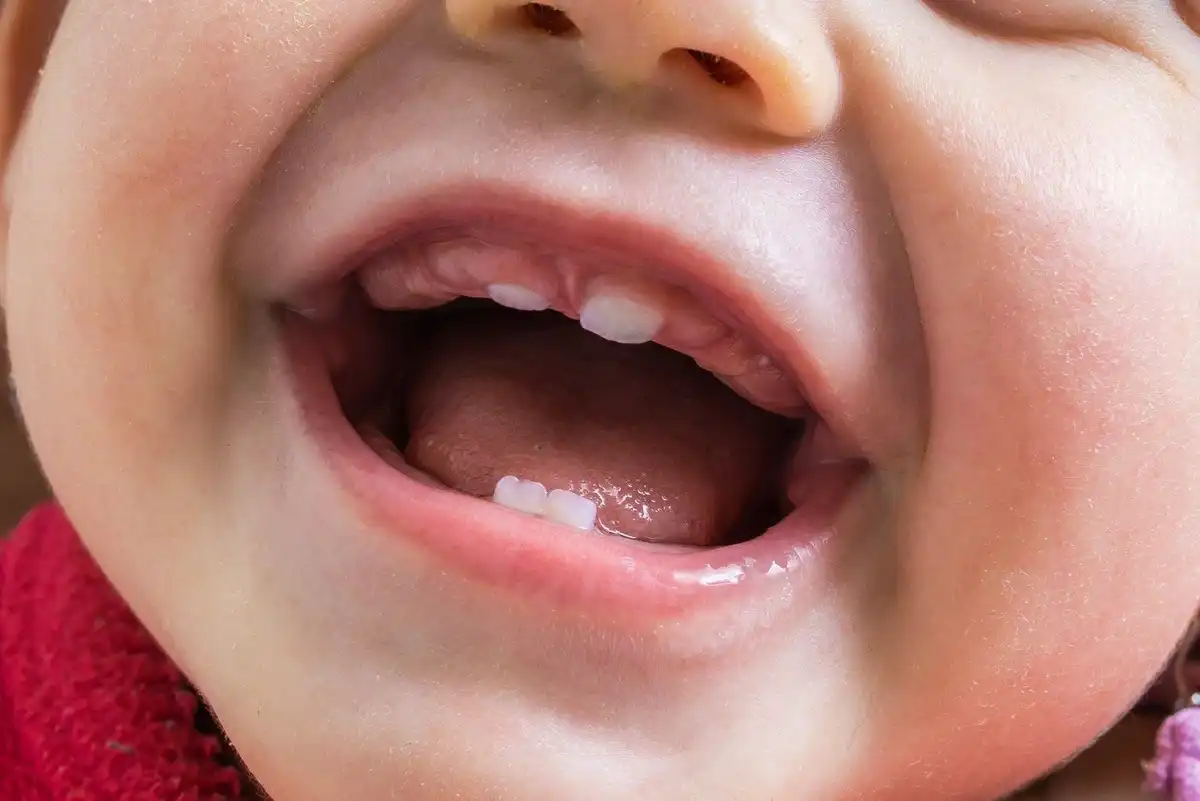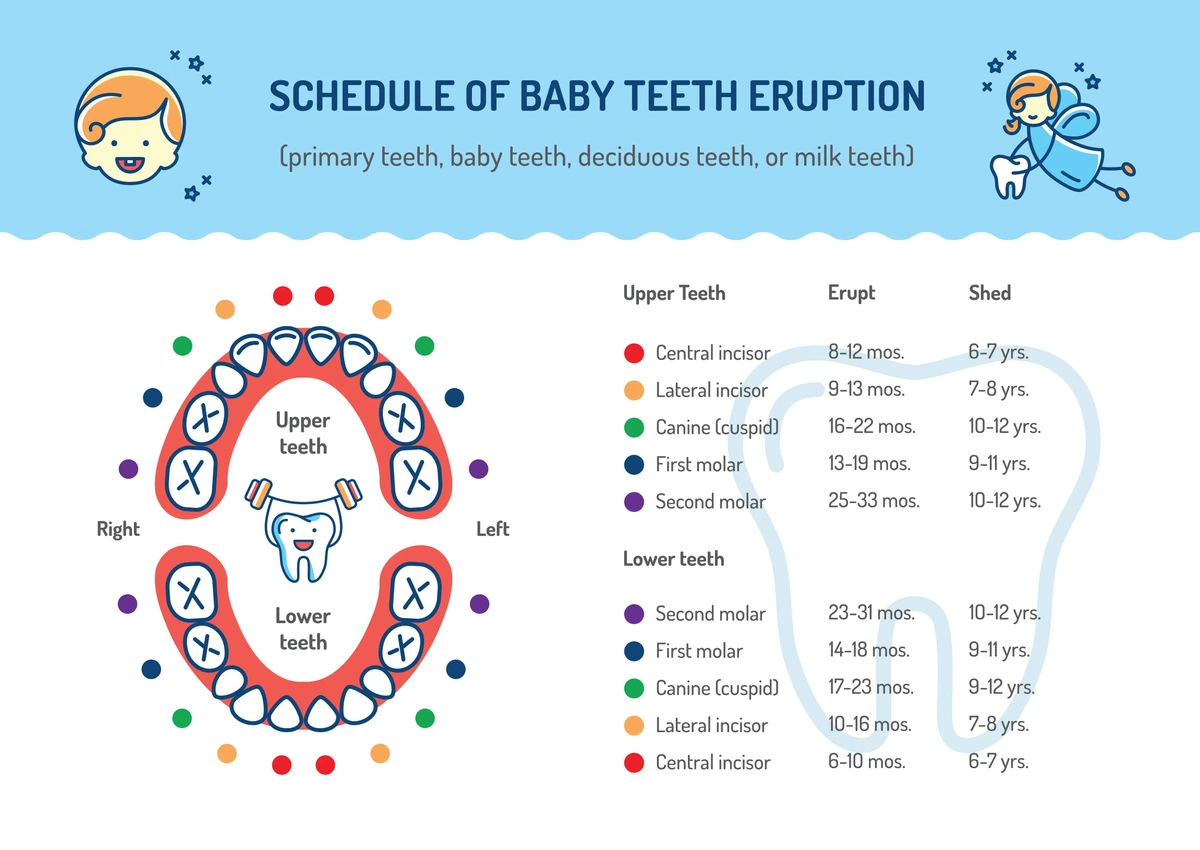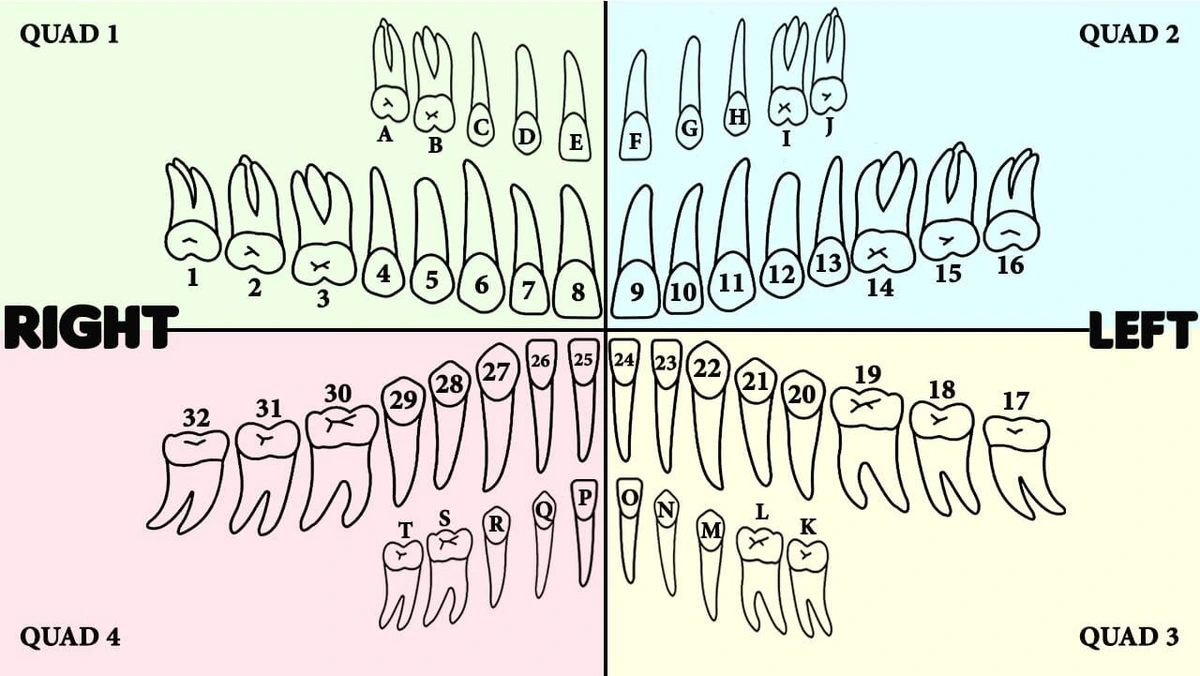Deciduous Teeth - How Many & When Will They Fall Out


Normally referred to as “baby teeth” or “primary teeth”, deciduous teeth are the first set of teeth to develop and erupt. You can also refer to deciduous teeth as the first “dentition”, or set of teeth.
How many deciduous teeth are there? Children have a set of 20 deciduous teeth. They start developing before your baby is ever born and are usually all present by the time your toddler is about two years of age. Once their deciduous teeth start getting replaced by their adult dentition, those 20 teeth will be changed out for a set of 32 permanent teeth (that’s including all four wisdom teeth).
When Will My Baby’s Teeth Come In?
Every child is different. Most deciduous teeth charts will list the first baby teeth erupting as early as 6 months of age. But for some infants, it might actually be closer to 10 months. As a general rule of thumb, your baby will get new primary teeth every couple of months until all 20 have erupted. The last set of deciduous teeth are the “2-year molars”, which come in around your child’s second birthday (but for some it’s as late as 33 months.)
The ADA recommends bringing your child in for their first dental exam by the time their first tooth erupts or no later than their 1st birthday. As you can tell, this is a fairly wide window of time depending on your child’s development! The key to a healthy smile is to get them in early and a good infant brushing routine.

When Do Permanent Teeth Come In?
Your child’s permanent (adult) teeth will start to make an appearance around the time your child is in Kindergarten or 1st grade. According to formal eruption charts published by the American Dental Association, permanent teeth begin erupting as young as 6 years of age and as late as 21 years of age (in the instance of wisdom teeth.)
For the most part, the majority of permanent tooth eruption is going to happen between the ages of 6-12. So, by the time your child is going into middle school or junior high, they’ll have a majority of their adult teeth (which is why you tend to see more kids in braces during this period!)
Once again, remember to check eruption charts to make sure your child is on track. Some get their teeth earlier or later than others, so a window of 1-2 years for a tooth to come in is still completely normal. Even in the same family you might see one of your children get a tooth at age 10, and another not get the same tooth until they’re 12.
How Are Deciduous Teeth Different From Adult Teeth?
There are a few distinguishing factors that set primary and permanent teeth apart. Baby teeth, in order to help proper adult tooth alignment, tend to be widely spaced to create extra room for their future replacements.
Baby Teeth Only Include:
- 8 incisors
- 4 canines/eye teeth
- 8 molars
Whereas Adult Teeth Include:
- 8 incisors
- 4 canines/eye teeth
- 8 pre-molars/bicuspids
- 12 molars

A child’s molars will eventually be changed out with bicuspids, and behind those will be a larger set of molars for chewing/grinding heavier types of food.
Structurally, baby teeth are weaker than the adult version. They aren’t as dense (because they ultimately need to resorb and go away) which unfortunately makes them more susceptible to tooth decay. If one of them gets a cavity, the caries needs to be treated quickly before it can spread down into the nerve or adjacent teeth.
Deciduous Teeth Recap
Tooth eruption timelines differ from child to child, but their first tooth should be in by the time they’re 1 year old. The last permanent teeth will erupt sometime in middle school (excluding wisdom teeth).
Even though your child’s primary teeth aren’t permanent, they still need to be kept healthy to encourage proper development of their adult teeth. Bring your child in for their first dental checkup as soon as the first tooth comes in (or no later than their first birthday) and every six months thereafter.

Make your inbox smile!
Subscribe






